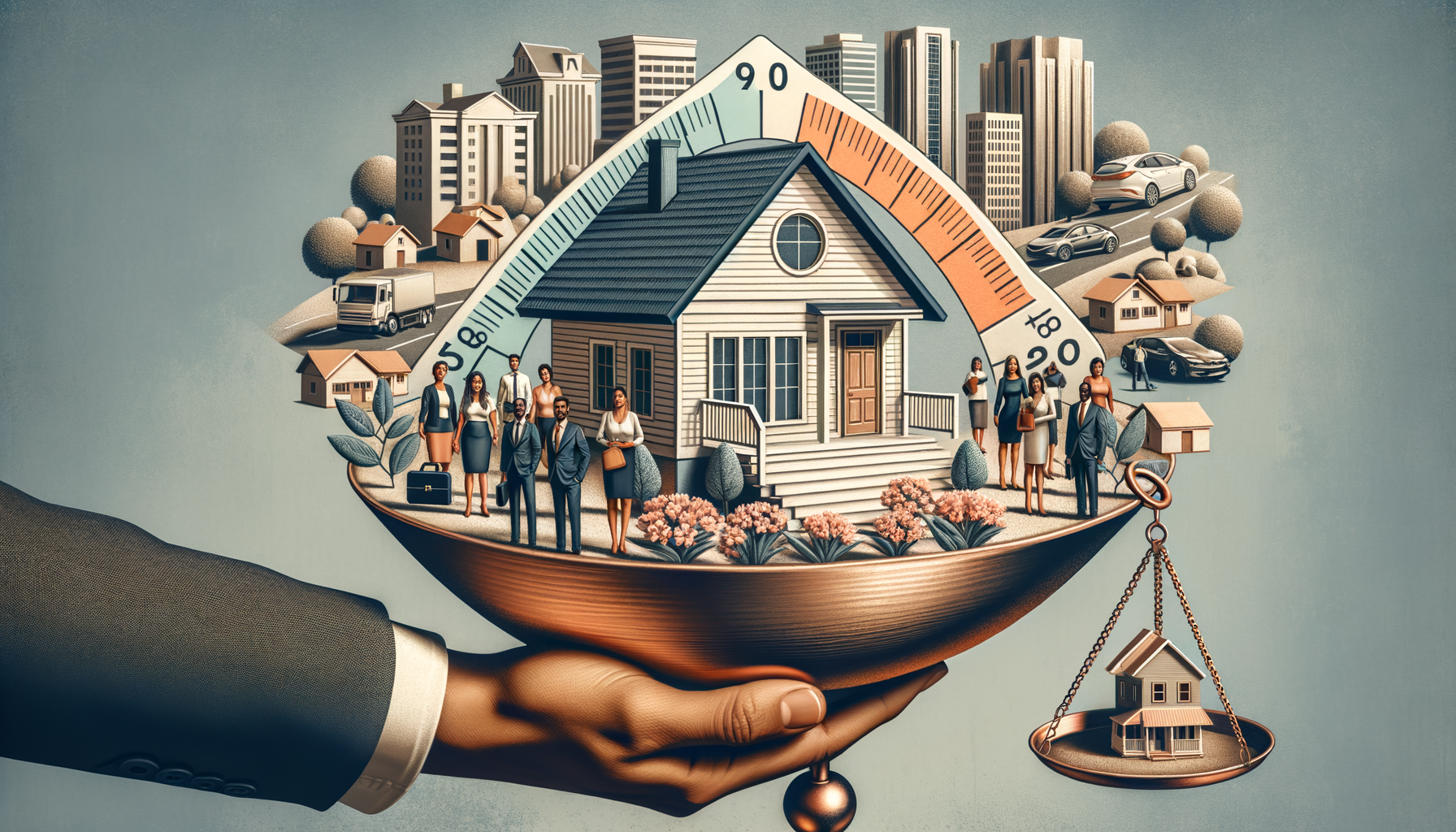“Surge in Mortgage Demand: A Detailed Analysis of the Recent MBA Report”

The mortgage industry has been experiencing an upswing, signaling a renewed vigor amongst consumers to purchase homes. The Mortgage Bankers Association’s (MBA) most recent weekly survey reveals that there has been an increase in both mortgage applications and refinancing activities. The statistics are certainly encouraging and paint an optimistic picture of the future of the mortgage industry.
What are the factors that have led to this boost in the mortgage industry? The answer lies in the falling interest rate scenario. Lower interest rates make loans cheaper, thus enticing prospective borrowers to apply for mortgages. The lower interest rate environment creates the perfect landscape for homebuyers to secure a mortgage. Affordable mortgage options appear more attractive to those considering homeownership as they can enjoy lower monthly payments and potentially more substantial savings over the long term.
The demand for mortgages has given rise to an optimistic industry outlook, suggesting a robust recovery from the previous lull caused by the Covid-19 pandemic. It’s important to remember that the pandemic had triggered a dramatic drop in mortgage applications due to widespread economic instability and job insecurity. However, the recent numbers indicate a turnaround, signaling a resurgence in the mortgage industry.
Notably, the refinancing index increased, pointing to a steady influx of homeowners looking to take advantage of the favorable interest rate climate. Refinancing can be an effective strategy for homeowners to lower their monthly payments or adjust the terms of their loans in response to changing interest rate conditions. Thus, the rise in refinancing activities is a testament to the changing trends and the industry’s adaptation to the fluctuating economic environment.
This upward trend is a positive sign for the overall economy as well. Mortgages are a crucial component of the real estate market – a sector that significantly contributes to the nation’s GDP. The high demand for mortgages fuels the real estate market and creates a ripple effect on related sectors like construction, thereby bolstering the economy.
Financial institutions and lenders have been quick to respond to this burgeoning demand. They have rolled out a variety of mortgage products to cater to differing needs of potential homebuyers. From fixed-rate to adjustable-rate mortgages, there is something for everyone. The availability of diverse mortgage options arms consumers with choices, empowering them to make decisions that best cater to their financial situations and homeownership goals.
While the overall demand for mortgages has moved northward, it’s interesting to note that the demand for government-backed loans showed a slight decline. Government-backed loans include Federal Housing Administration (FHA), Veterans Affairs (VA), and U.S. Department of Agriculture (USDA) loans. Typically, these loans are popular for their flexible terms and lower down payment requirements, making them suitable for first-time homebuyers or those facing credit issues. Special attention must be paid to this decline to understand its implications better and devise strategies to tackle any potential issues.
The current demand for mortgages shows that potential buyers are not shying away from making large financial commitments despite the ongoing pandemic-induced uncertainties. Consumers’ willingness to invest in homeownership reflects their confidence in the future and the stability of the economy. Such consumer behavior signifies a robust path to recovery from the economic disruption caused by Covid-19.
However, it’s crucial to adopt a balanced perspective while analyzing these trends. While the mortgage industry is showing encouraging signs of recovery, it’s also essential to remain cognizant of the ongoing challenges. The aftermath of Covid-19 has left many people’s economic situations precarious. Many potential buyers could still be grappling with financial instability, job loss, or reduced income.
Therefore, while the increasing mortgage demand is indeed a positive sign, it’s critical for the industry to strike a balance. Financial institutions must ensure that lending practices remain responsible, and borrowers are assessed thoroughly to avoid default risks. Additionally, support needs to be extended to those facing financial distress, ensuring solutions are created to prevent foreclosures and the displacement of homeowners.
Moreover, potential homebuyers should take a comprehensive look at their financial situation before applying for a mortgage. They should ensure they can comfortably afford the monthly payments and accommodate any potential income changes in the future.
In conclusion, the rising demand for mortgages indicates a positive shift in the mortgage industry, signaling economic resilience amidst ongoing challenges. As the industry navigates this evolving landscape, it’s equally crucial to remain vigilant about potential risks and take appropriate measures to ensure a healthy and sustainable lending environment.
